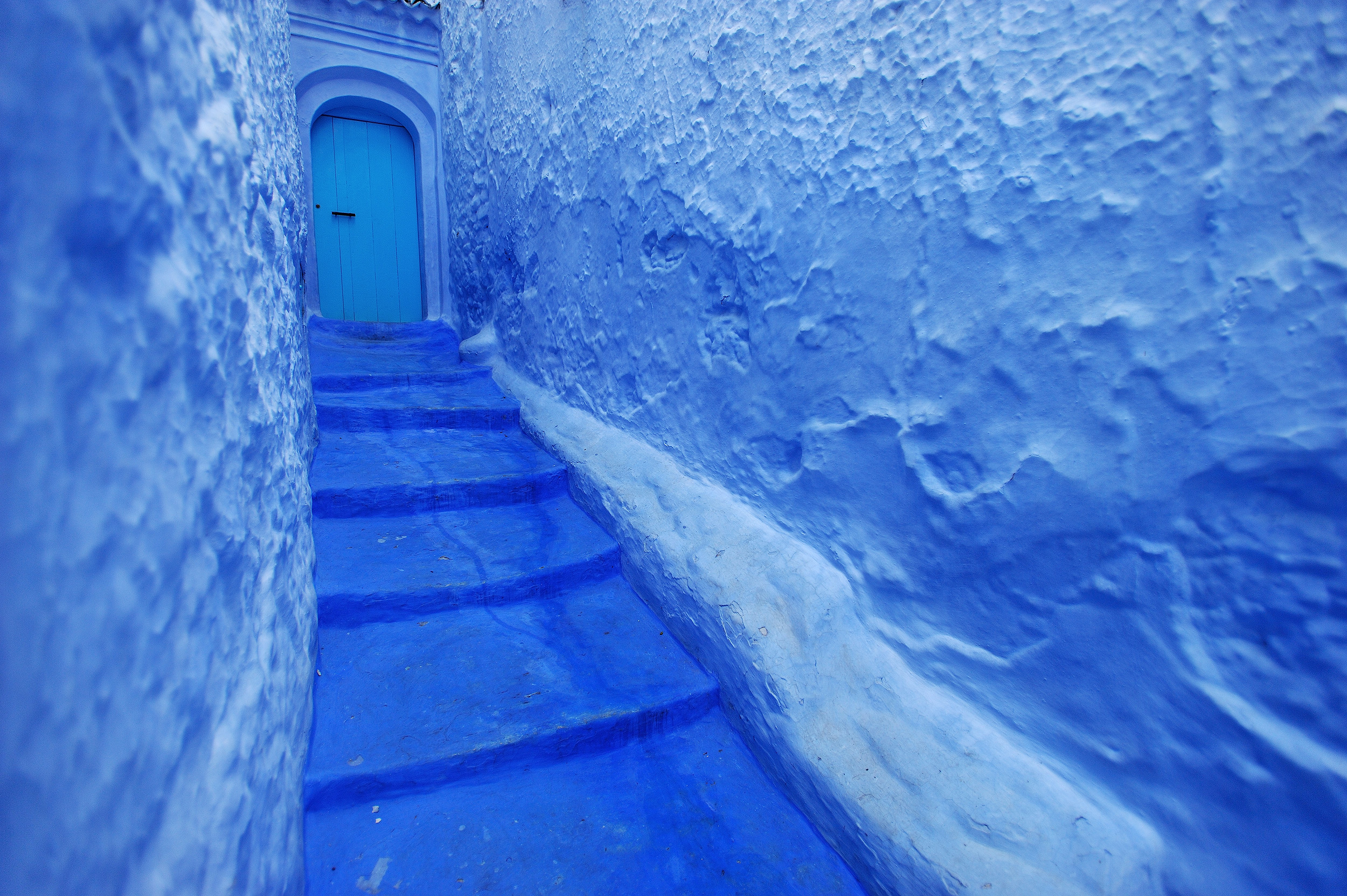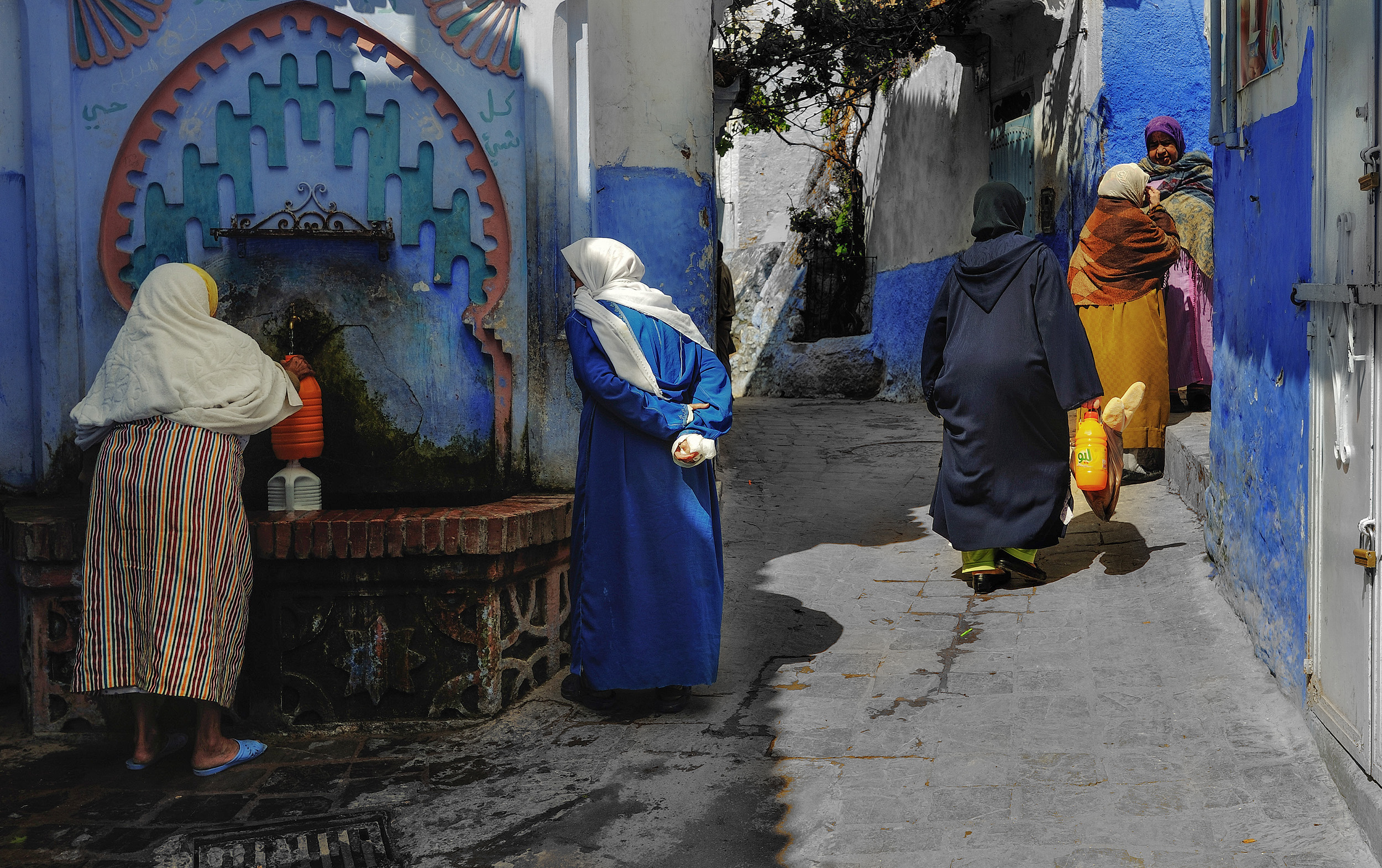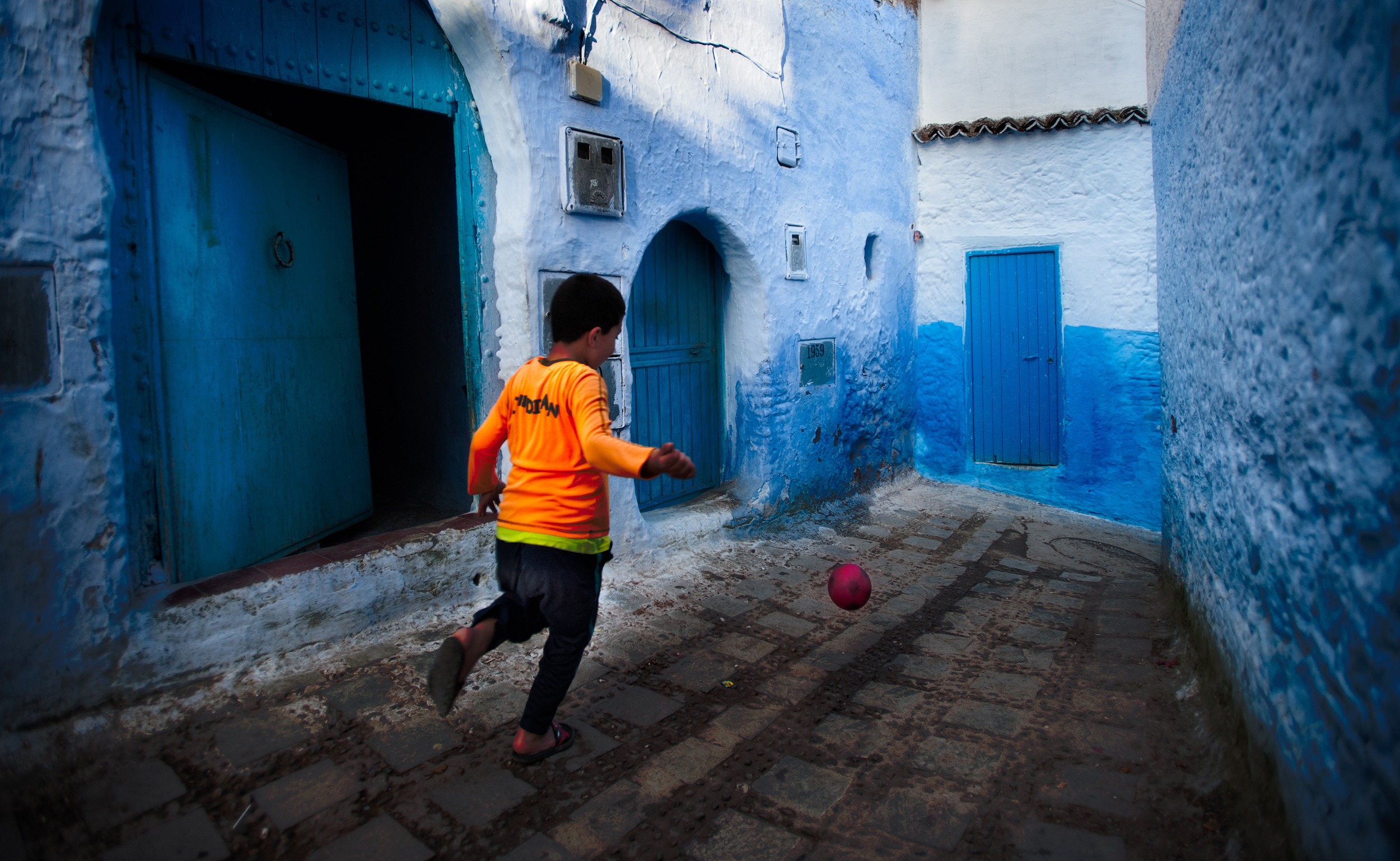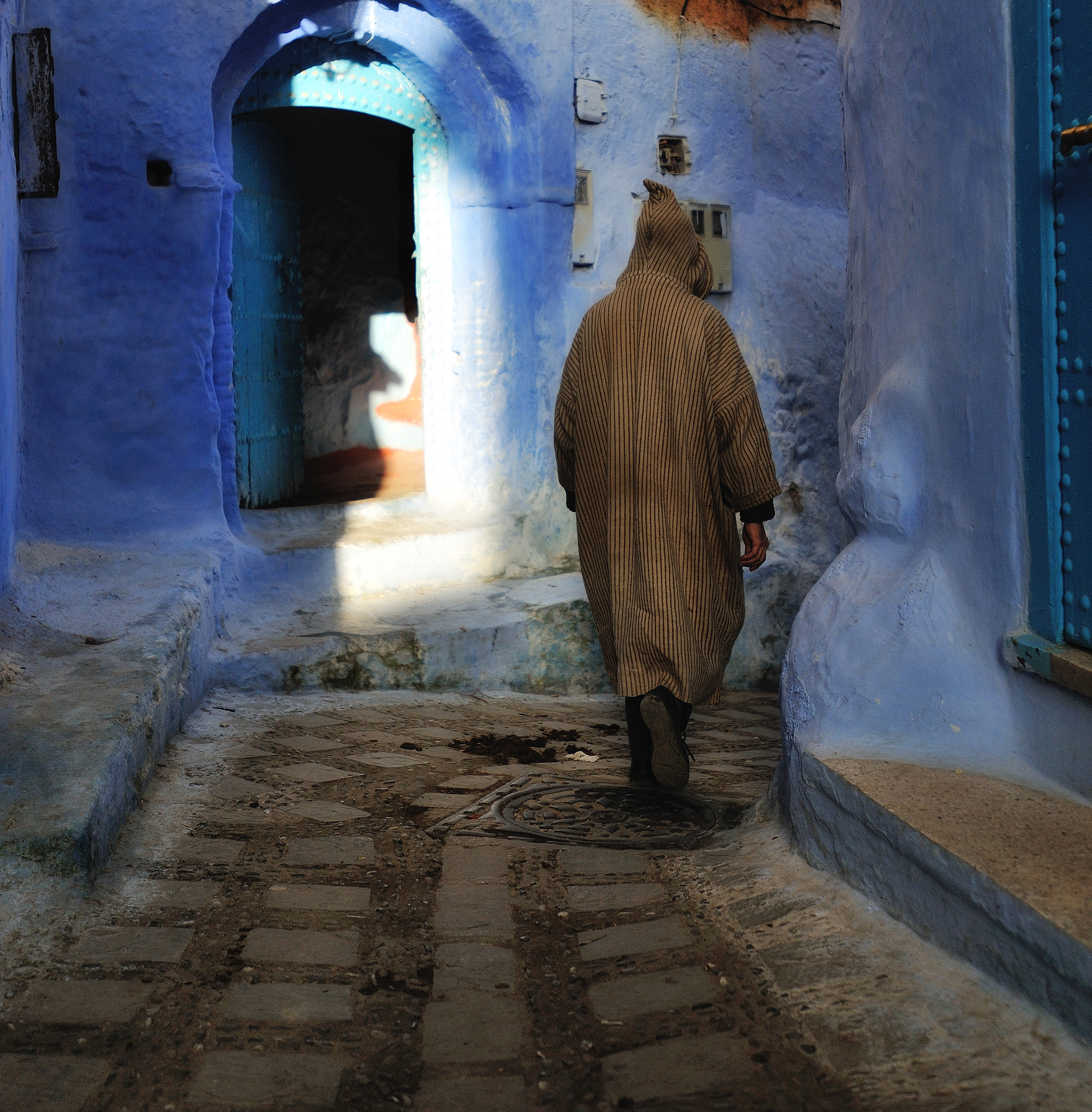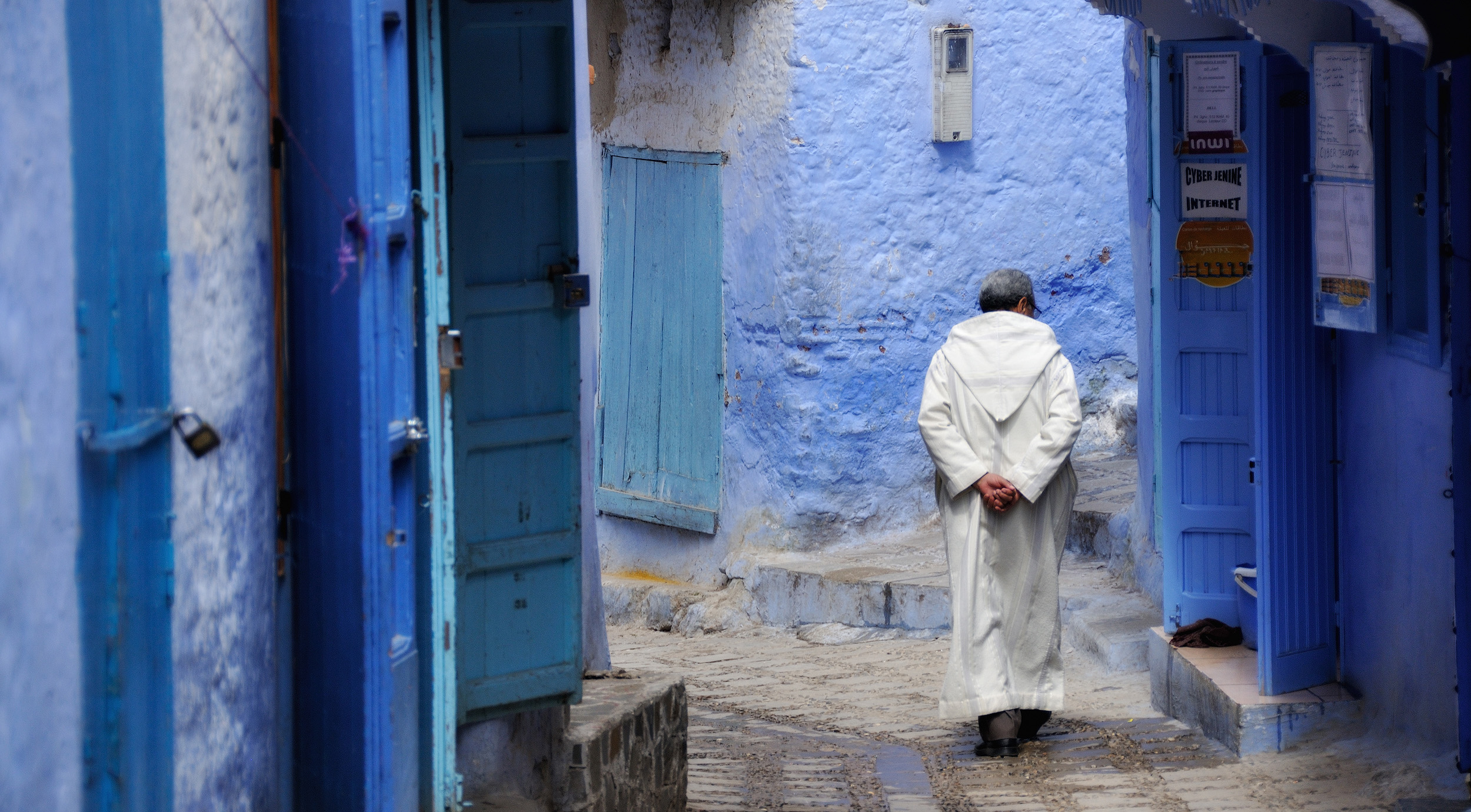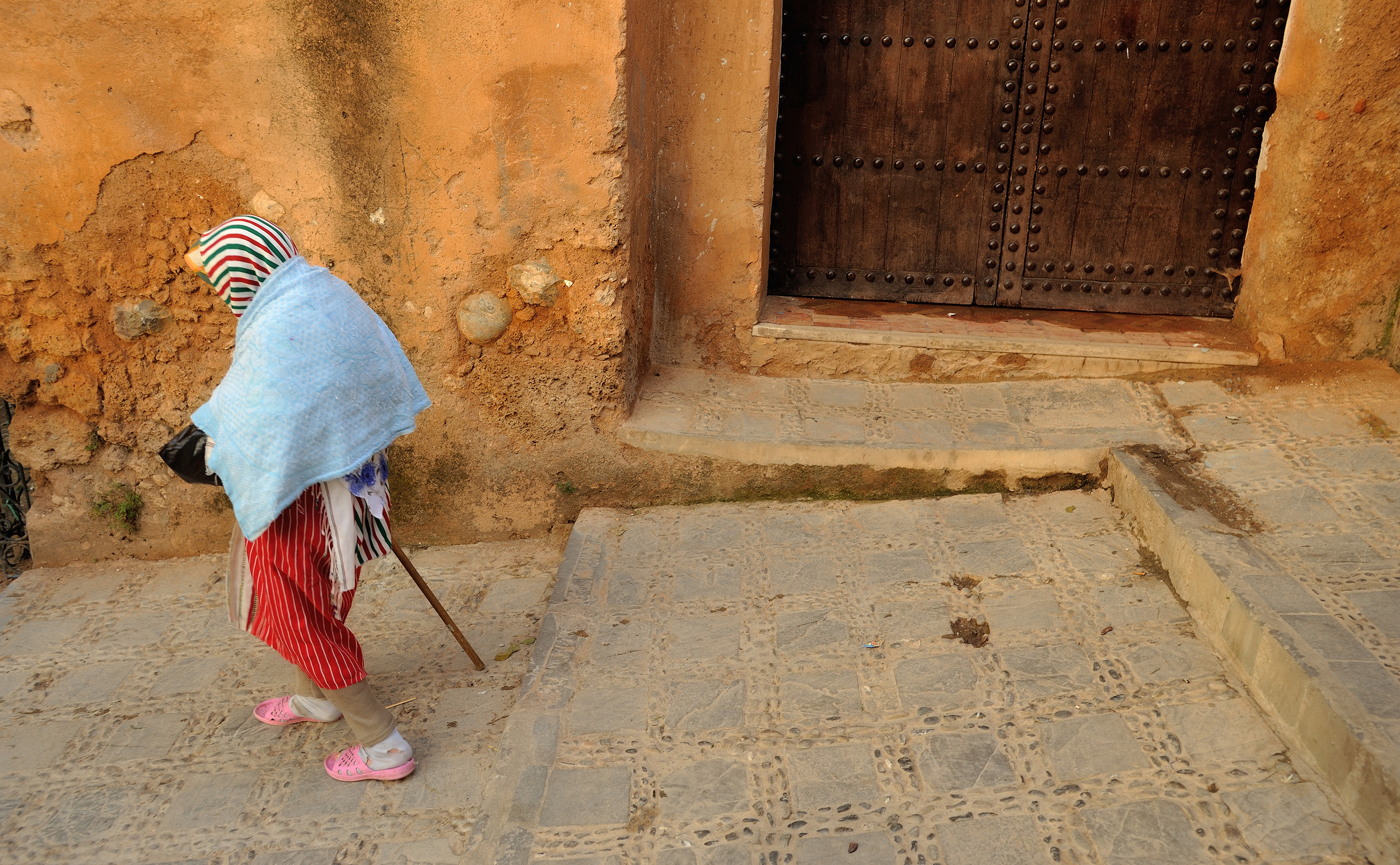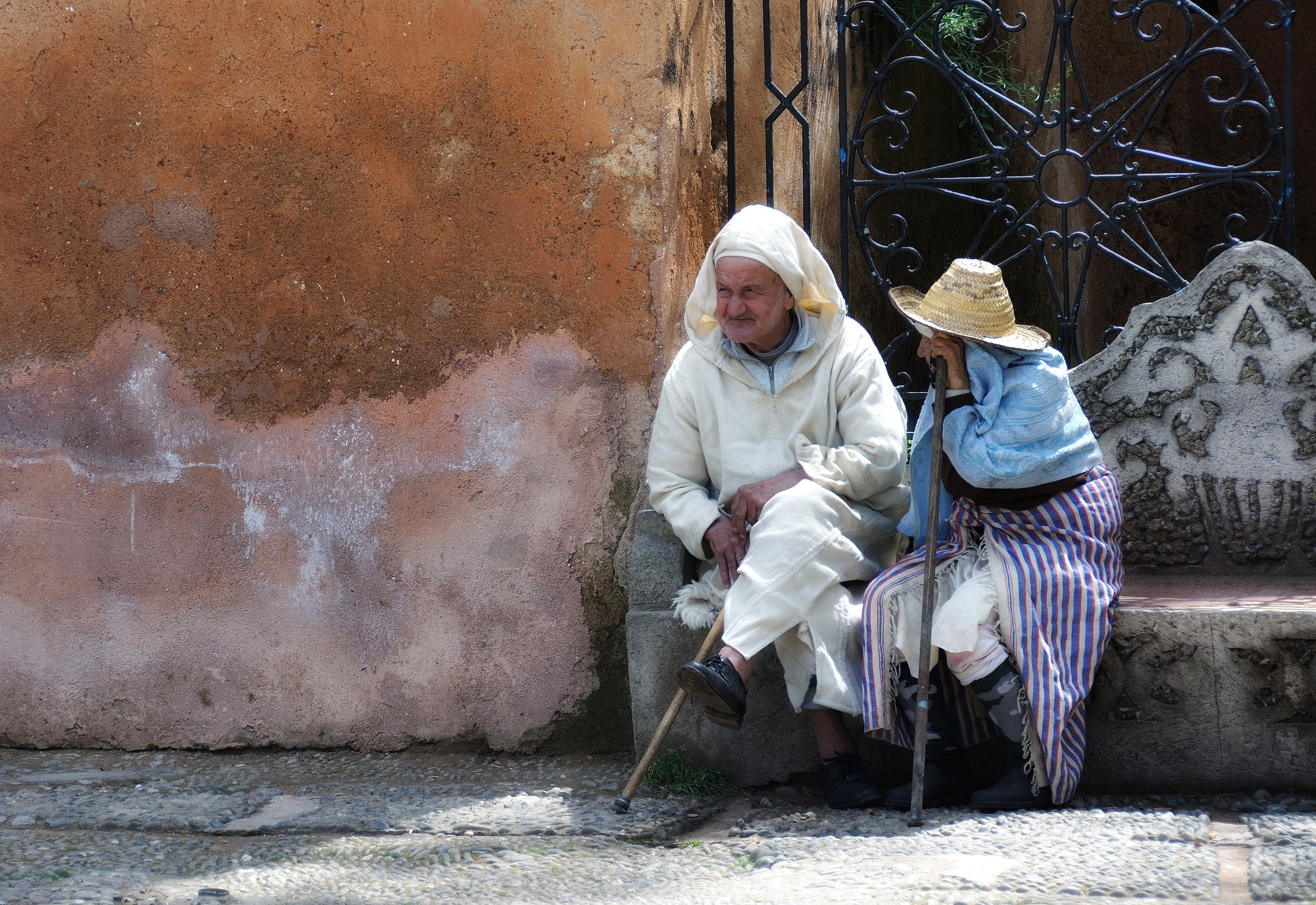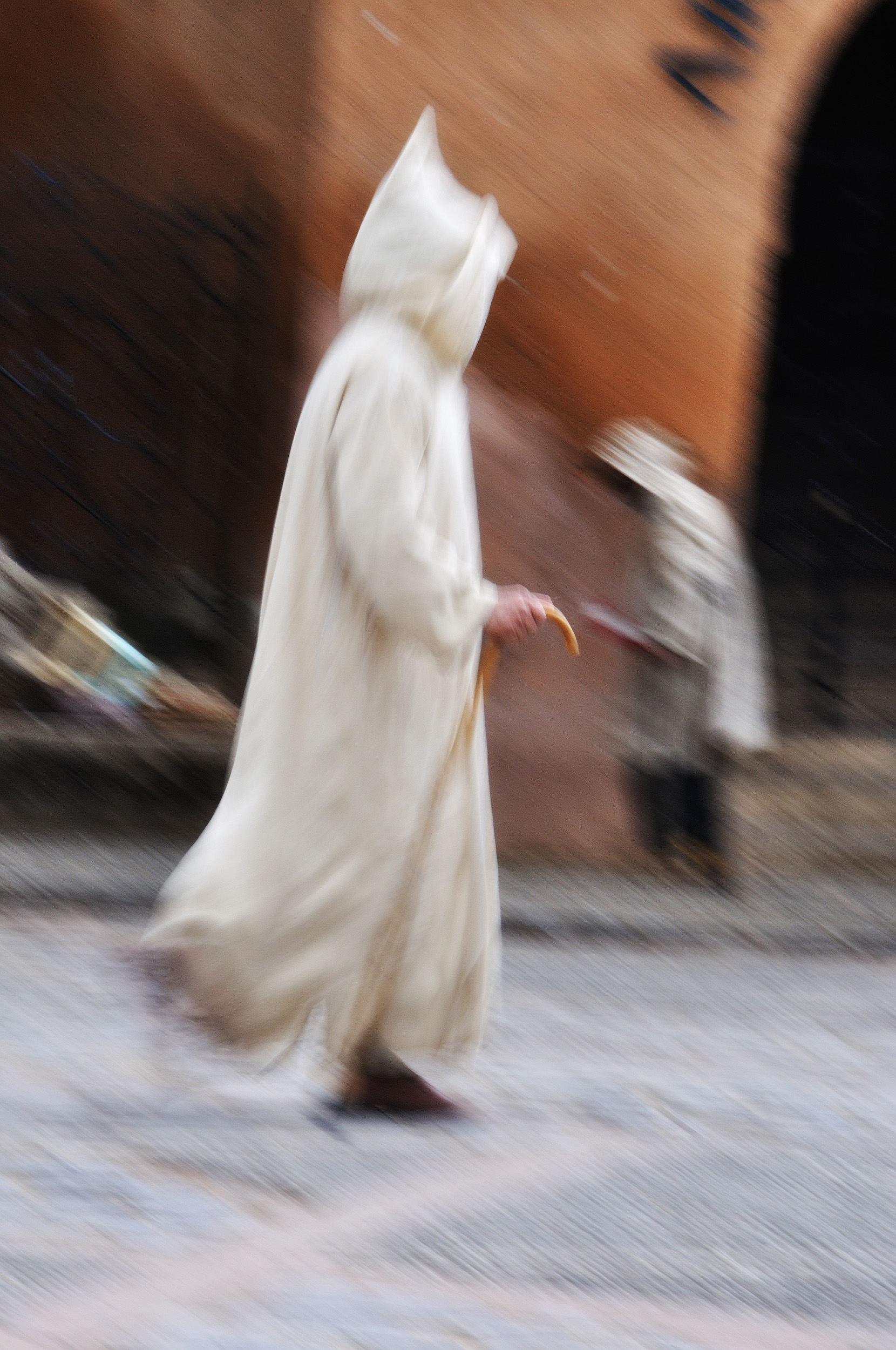MOROCCO PART 3: CHEFCHAOUEN
After three days in the Sahara, it was time to head back north to Chefchaouen, a small town in the Rif Mountains, in the north of Morocco. It was going to be a long journey, and we'd decided to break it at the Roman ruins of Volubilis, near the city of Meknes.
Even so, the drive was still a marathon. On our last day in the Sahara we awoke in a berber tent in the middle of the dunes, got up to photograph sunrise, then had the hour long camel ride back to the kasbah we'd used as our base. A quick shower, change and breakfast, then we hit the road back north across the middle Atlas mountains. We'd been so blown away by the changes in scenery on our way down, that we thought it would be a nice idea to film it using the video recorder on the D90. So at various points of the journey, we filmed the passing scenery, towns and people, with the idea that I could edit all the short clips together to make a brief film that shows the changing of the landscape and culture across the length of Morocco. We kept the idea up all the way until the port in Tanger, and at some point when I have time, I'd like to sit down and get to work on cutting it together.
Anyway, the drive north turned out to be more tiring than the drive down had been. The fact that we'd been up since before dawn, and the sheer amount of time on the road meant that after 6 or 7 hours driving, we were started to have had enough. Passing through Meknes we came out on the other side into lush countryside more reminiscent of Tuscany or Alentejo than how people consider Morocco. The transformation from the desert we'd left in the morning was stunning, and as we drove up to the hilltop village of Moulay Idriss and the fields around Volubilis, I was amazed at how green and beautiful it was. We arrived at our hotel overlooking the site of the roman ruins, and collapsed onto the bed. I'd planned to have a walk around the site, but we were so tired and hungry, all we could think of was eating and going to sleep. However, the room had a fantastic view of the ruins and the surrounding countryside, and I watched a thunderstorm pass over the landscape, before it was beautifully illuminated with late light. The shot below is a 3 image panorama of the view from our balcony.
The next day, we awoke fully refreshed and made the short drive into the heart of the Rif mountains to Chefchaouen. It was a beautiful drive, past hilltop villages, seeing the fields full of shepherds and their animals, running water and peaks that rose higher and higher.
Eventually we arrived in Chefchaouen, a mountain village famous for the blue colour of it's medina. I'd seen photos, but nothing prepared me for the stunning colour of the place, it's just incredible. Every street looks like a postcard, the blue is used on the walls, the doors and sometimes even the floors. Like most medinas, there are no cars allowed inside the gates, and the streets are in reality little more than winding alleyways.
We stayed in a riad in the centre of the medina called Dar Hannan, a really calm, relaxed place where it was easy to just walk out into the medina and get lost in the beautiful blue streets. We were both happy to spend the afternoon just wandering around the town looking at the details of the walls, doors and houses. Even the interior courtyards are painted in the same bright blue. (We actually loved the colour so much, we bought some of the pigment back to use in the garden).
It's the kind of place where you want to photograph every street, every alley, every door and courtyard. However, to really bring the pictures to life, and to complete the photo portfolio, I wanted shots of the people who lived there going about their everyday lives. In Chefchaouen we found that so many of the people dressed in the traditional clothing of the Rif mountains, and I tried out various ways of capturing the people in the town, from panning shots against the blue walls, to candid shots of the people as they sat talking in the square. The best time for photographing turned out to be first thing in the morning. The streets were relatively quiet, free of tourists, and the light was flat and even, which really brought out the blues.
This was another example of what I normally do in photography being turned on it's head. Usually when I shoot in cities, I liked dramatic late light creating contrasts of shadow and light, and bringing out texture on the walls and floor. Here however, these kind of conditions diminished the strength of the blues, so I found that the overcast mornings, or shooting in even shadows gave the best results, really letting the colours of the town and the local costumes come out.
We also spent a lot of time in the main square, just observing the local people sitting and talking, drinking mint tea, and themselves, watching the world pass by. It's a fascinating small town, and well worth spending a couple of days there. I was happy with some of the shots I got there, but it's the kind of place where you always think there's more to do, just the combination of that blue on the walls, and the fantastic local costumes.
After a day and half though, it was time to pack everything in the car for the last time, then start the drive north through Tataouen to catch the ferry at Tanger, and then the long drive up from southern Spain to our home in Lisbon. It had been a fantastic holiday, but we were ready for our own bed, for our own shower. We had a few hiccups getting our ferry tickets (we'd almost run out of money, and neither the credit card machine nor the cash machine worked in the ticket office), and the interminable customs checks, but eventually we were on the boat and heading back to Europe. Once again, we were impressed by how beautiful southern Spain is, and then around the time night fell, we were crossing the bridge across the Guadiana river into Portugal. Another 3 hours on the motorway, and we arrived back home a little after midnight, 13 or so hours after leaving the hotel in Chefchaouen.
Looking back on the trip, and going through the images, it's been an amazing experience. We've seen some stunning places, met some great people, and the excitement of just pointing the car south, and driving to another continent through so much varied landscape has been incredibly rewarding.
Photographically, it's been a rich experience with so many different kinds of photography, so many different ways of seeing, techniques, and ways of thinking about capturing the scenes we witnessed. It's made me realise the trips where I just photograph landscapes are perhaps a little lacking, as I get so much pleasure from documentary photography, and a travel portfolio feels all the more complete for having a wide range of different shots in it. From this point of view, it's probably been the most productive and creative trip we've made, which of course sets the bar high for the next one.
We're already discussing where we might like to go...








